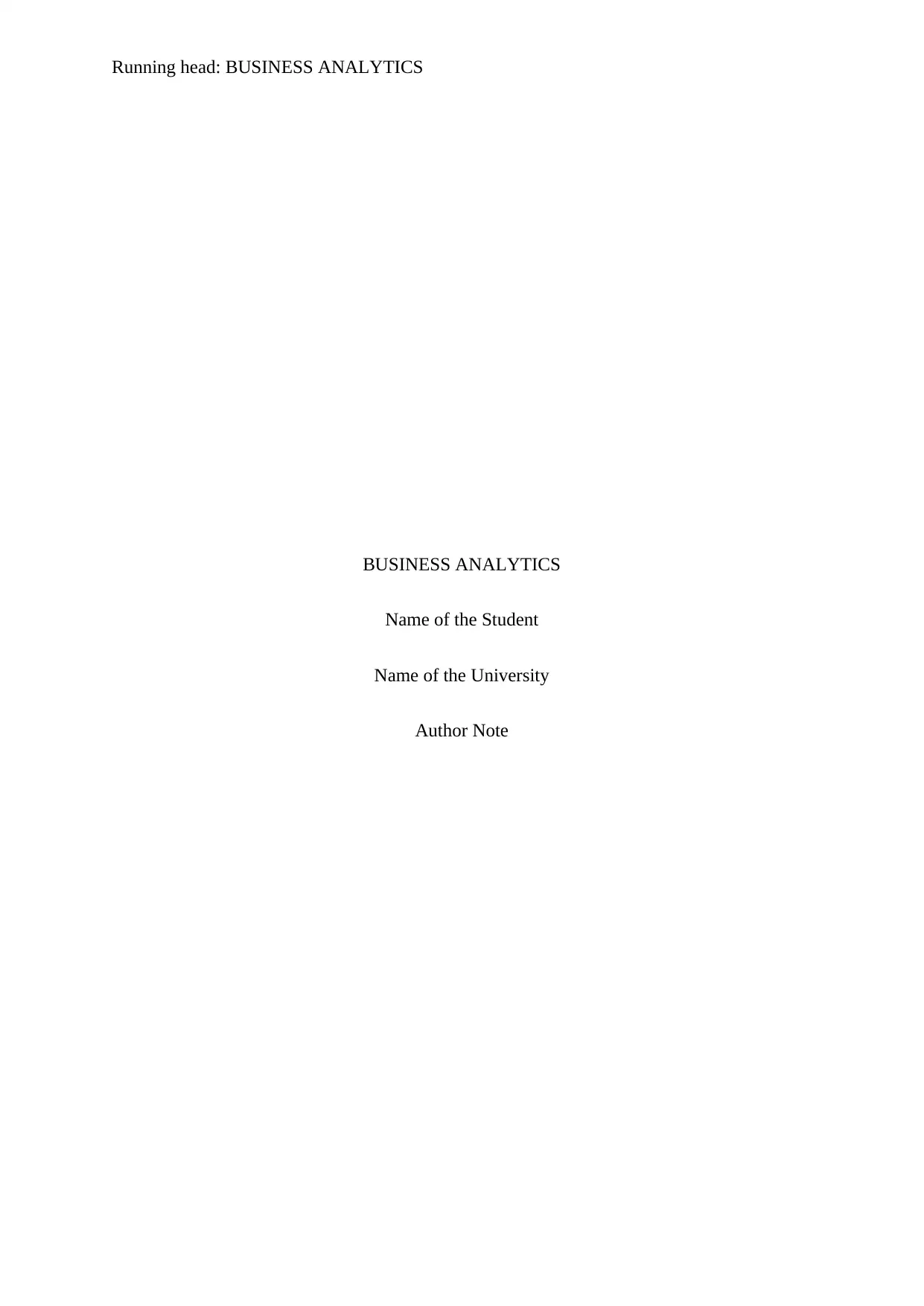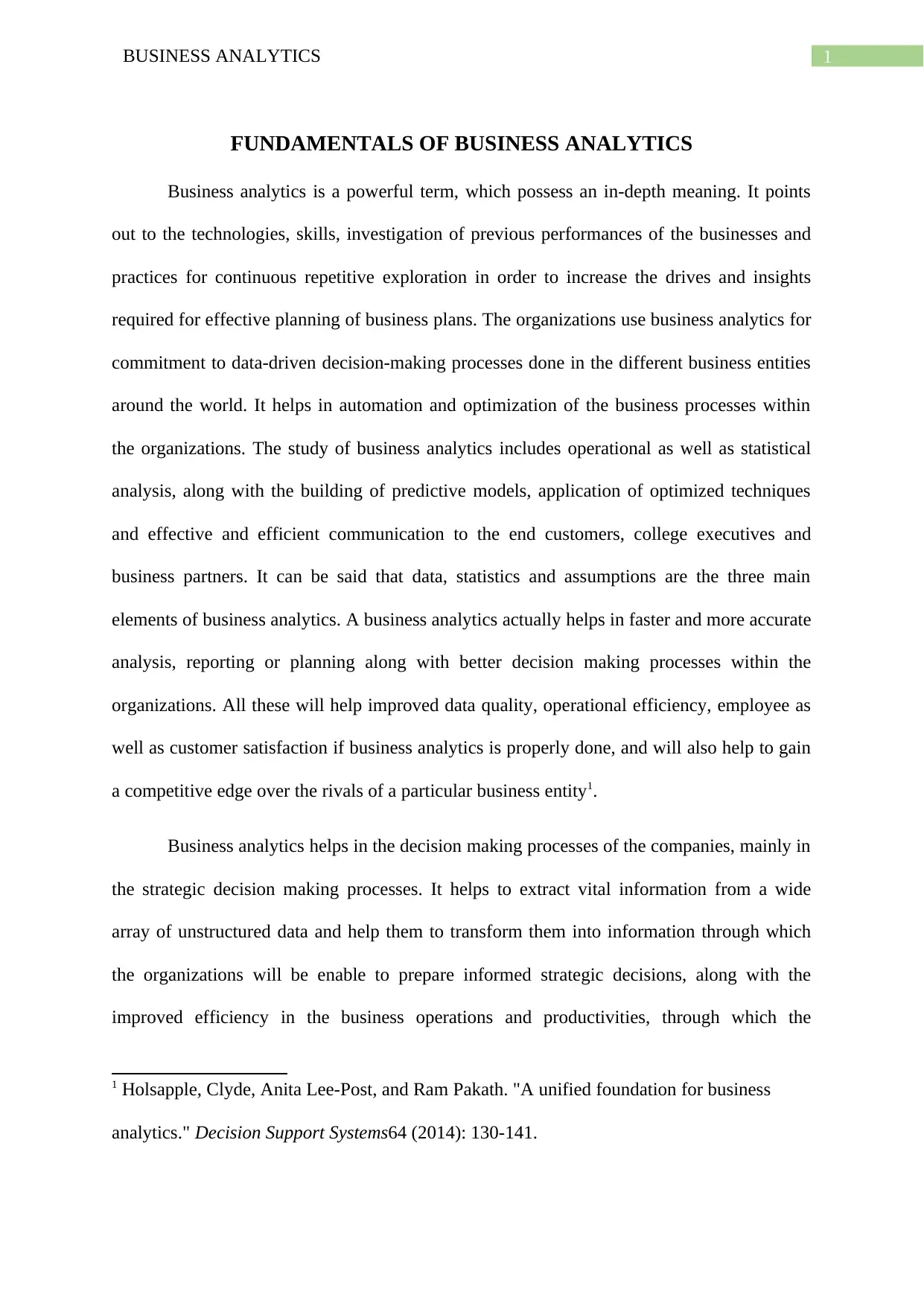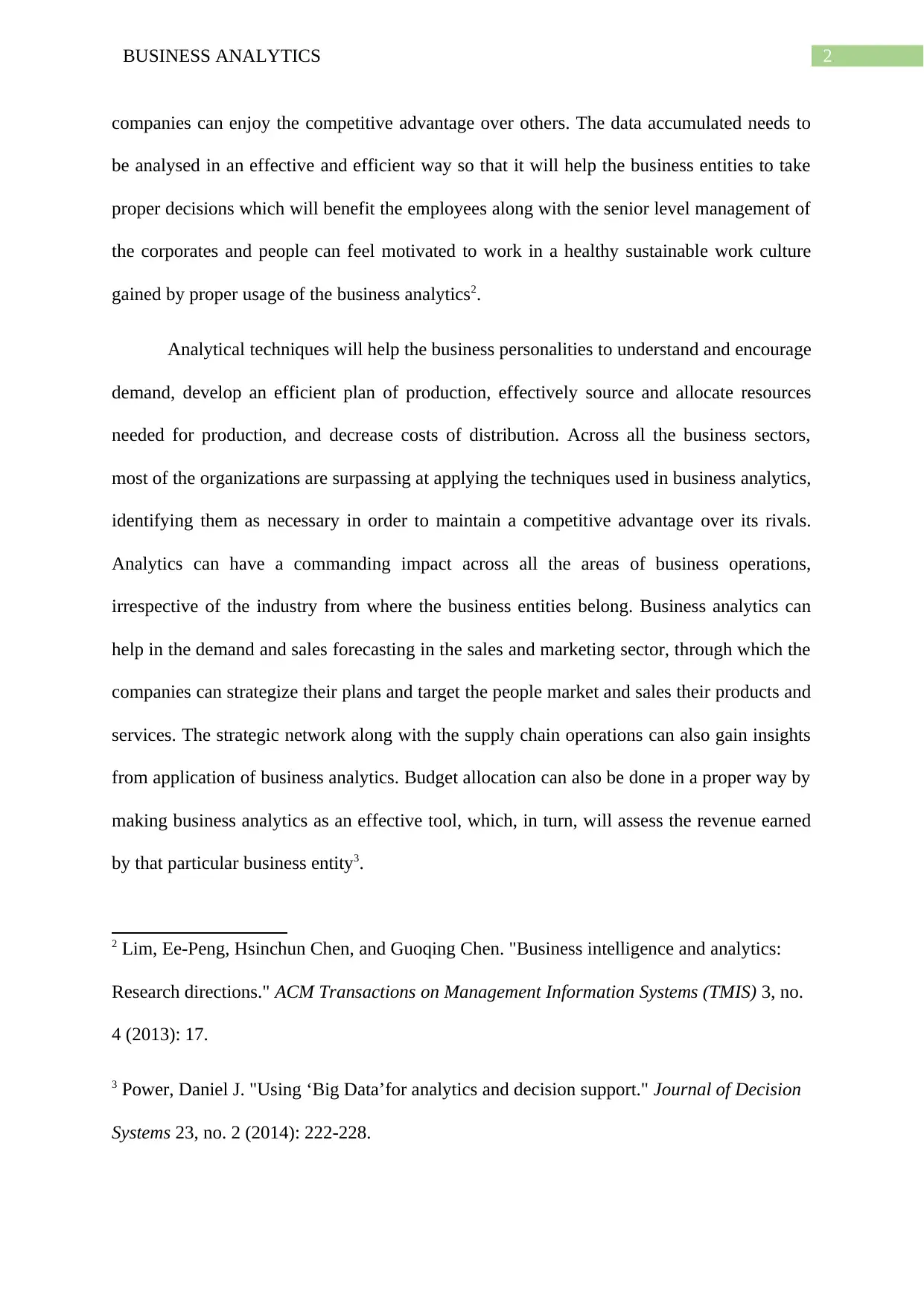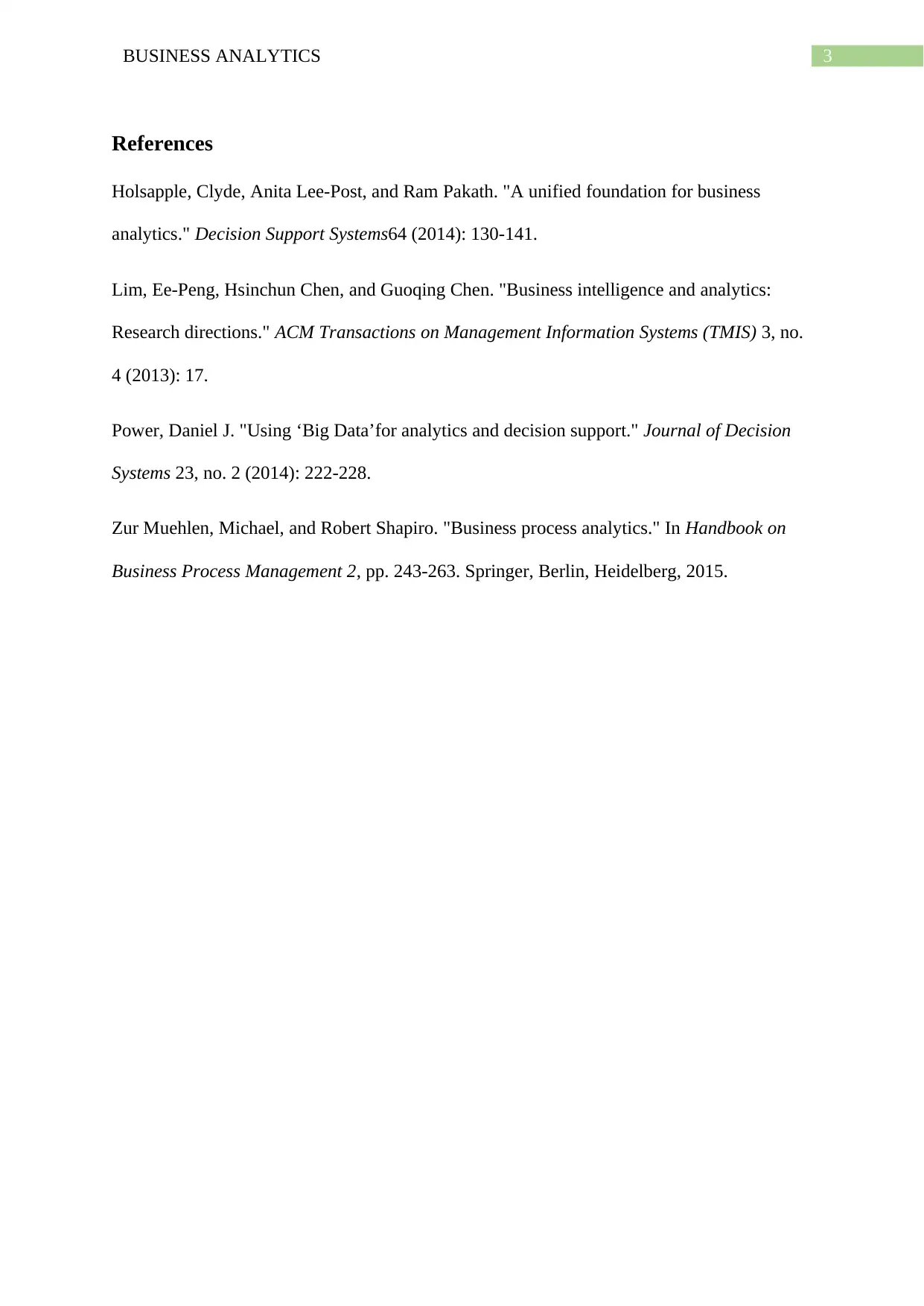Canadian Business Magazine: Business Analytics Essay
VerifiedAdded on 2022/11/24
|4
|705
|460
Essay
AI Summary
This essay delves into the fundamentals of business analytics, emphasizing its crucial role in data-driven decision-making within organizations. It highlights the use of business analytics in automating and optimizing business processes, including operational and statistical analysis, predictive modeling, and effective communication. The essay underscores the importance of data, statistics, and assumptions in faster, more accurate analysis, reporting, and planning, leading to improved data quality, operational efficiency, and customer satisfaction. Furthermore, it explores how business analytics aids in strategic decision-making by extracting vital information from unstructured data, thereby enabling informed strategic decisions and enhancing competitive advantage. The essay also discusses the application of analytical techniques in various business sectors, such as demand forecasting, supply chain operations, and budget allocation, illustrating its broad impact across all areas of business operations. The provided references support the essay's arguments and provide a foundation for further study in this field.
1 out of 4











![[object Object]](/_next/static/media/star-bottom.7253800d.svg)